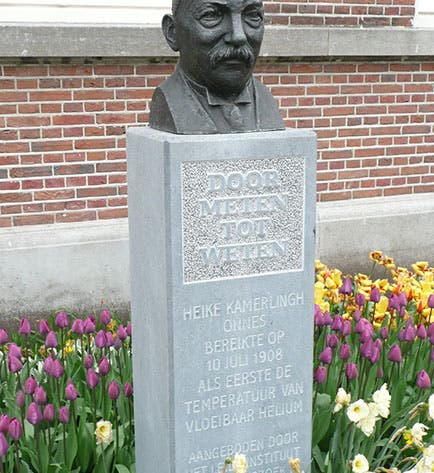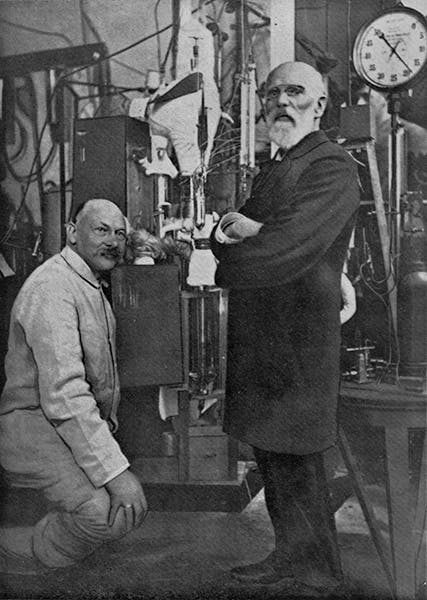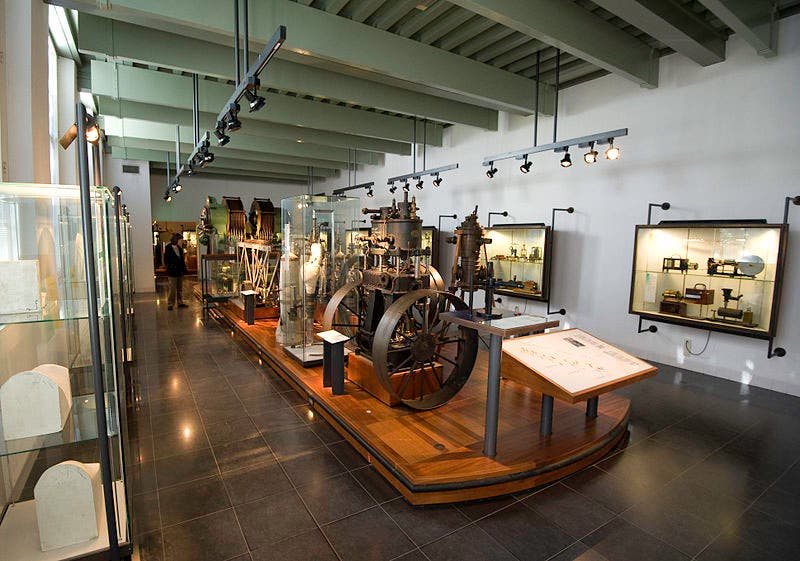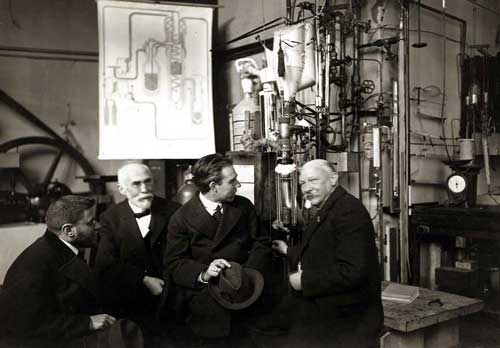Scientist of the Day - Heike Kamerlingh Onnes
Heike Kamerlingh Onnes, a Dutch physicist, was born Sep. 21, 1853. He specialized in studying matter at extremely low temperatures. Yesterday's Scientist of the Day, James Dewar, was also a low temperature physicist. Ordinarily we like to vary the fields of scientists from day to day, so we rarely follow a physicist with another physicist. But in this case, since Dewar and Kamerlingh Onnes were not only contemporaries, but competitors, and since yesterday's story was in some ways unfinished, with liquid helium being introduced as a problem not yet solved, it seems appropriate to continue the narrative today.
Kamerlingh Onnes built and presided over the low-temperature lab at Leiden University. He was 11 years younger than Dewar, and it took him a while to catch up to his esteemed English colleague. He liquified oxygen for the first time in 1892, nine years after that had been accomplished elsewhere, and he managed to produce liquid hydrogen in 1906, 8 years after Dewar had done so, for the first time anywhere. Hydrogen, you will recall from yesterday, liquifies at 20 K, or 20 degrees above absolute zero, and solidifies at 14 K.
Hydrogen had the lowest boiling point of any gas until helium was isolated in 1895. Helium had actually been discovered spectroscopically in the Sun in 1868, but no one could get their hands on the stuff until William Ramsay found it on earth in 1895. Naturally, the low-temperature physicists had a go at liquifying helium, but initially without success. Liquid hydrogen will liquify any other natural gas, but not helium. So other techniques and hardware are necessary. Kamerlingh Onnes discovered those techniques and built that equipment, and he produced the first liquid helium in 1908. Helium stubbornly resists liquifaction until you reduce its temperature to 4.2 K, which explains why the task was so difficult.
Once he learned how to accumulate liquid helium, Kamerlingh Onnes made another startling discovery--if you immerse a metal wire (in this case mercury, which is a solid at these temperatures) in liquid helium, it loses all resistance to electric current and becomes a "superconductor". The discovery of superconductivity came in 1911, and Kamerlingh Onnes would probably have earned a Nobel Prize without it, but this certainly speeded things up, and he received his Nobel medal in Physics in 1913. Much of the super-cooling equipment from his lab can be seen in Room 21 of the Boerhave Museum in Leiden, a science museum well worth visiting if you are ever in the Netherlands (third image).
The last image is of interest because it shows Kamerlingh Onnes in his lab in 1919 with three rather distinguished visitors: Paul Ehrenfest, Hendrik Lorenz, and Niels Bohr (L to R). Only Ehrenfest failed to snag a Nobel Prize.
Dr. William B. Ashworth, Jr., Consultant for the History of Science, Linda Hall Library and Associate Professor, Department of History, University of Missouri-Kansas City. Comments or corrections are welcome; please direct to ashworthw@umkc.edu.









